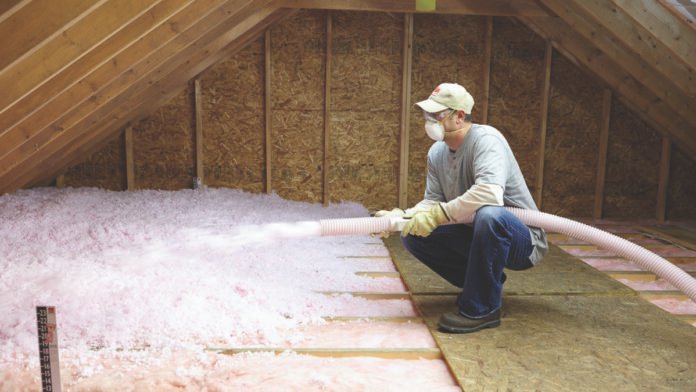One of the easiest and most affordable ways to make your home more comfortable is by insulating it. Whether you are looking to insulate your home to protect it from the searing summer sun or the frigid winter winds, an insulated home will be protected from all the natural elements of nature. One usually does not see insulation in a house, but can only feel its presence or absence. Hence when you walk into a building without insulation, you would immediately know- as wallboards and plasters are not effective in keeping out the harsh weather elements. While insulating a home, the attic is the best place to start. You can check out ideas for affordable attic insulation here and also get a fair idea about insulating your outbuilding, garage, or any other structure. This way you will get a fair idea about your home insulation options.
Home insulation is known for reducing the cost of cooling and heating your home. It helps to retain heat during winters and makes the house cool during summer. But if you are remodeling your home and your budget is a little tight, there are also several low-cost home insulation materials that can do the job just as fine. In this article, we will talk about affordable home insulation contractor solutions.
5 Cheap Home Insulation Solutions:
- Fiberglass Batts: Fiberglass batts are normally the cheapest home insulation solution, but a loose corner or rip might reduce the insulation’s effectiveness. Fiberglass is effective for containing heat before it can migrate to your home’s chilly areas. Generally, batting comes in thicknesses of 16 or 24 inches and fits between beams or studs, making it ideal for new construction in attics and other spaces with little limitations. Glass fibers are mixed with plastic to make fiberglass. If you are going for a DIY insulation job, always wear gloves while handling fiberglass. It contains glass that can scrape your skin.
- Floor Covering: The heat loss through the floor is believed to be around 10%. The floor should be insulated to prevent heat from escaping. There are two different types of flooring that are widely used. There are two types of flooring: suspended and solid. Solid flooring is installed directly on the ground. Suspended flooring is that which is elevated from the ground. While the two types of flooring differ in several ways, both are expected to lose roughly 10% of their heat if not properly insulated. Covering solid flooring with a carpet or rug is one of the cheapest methods to insulate the floor.
- Cellulose Insulation: Blown-in cellulose insulation may be applied to your attic as well as your internal walls. The cellulose must be inserted with a nozzle during installation. It has a good insulating value as well. One of the benefits of cellulose insulation is that it may be put over existing insulation to provide extra weather protection. This solution is great for under-construction homes before the walls are plastered. But if the homeowner wishes to install it later on, a home insulation expert would need to drill through the walls and insert the materials into them and again plaster and patch it up.
- Stone Wool: Stone wool which is also known as mineral wool, didn’t get popular as an insulating solution for a long time. But due to its affordability and effectiveness, it started gaining popularity recently. Stone wool is popular among homeowners because it is easy to put on interior walls. It is known for being nonabsorbent, and thus it will not become saturated with water if it gets wet. If your home experiences a huge leak, you wouldn’t have to worry about the insulation falling on top of the other damage. Stone wool is also fire resistant, so in the worst-case scenario your house catches fire, it won’t change its shape. Stone wool’s structural strength may potentially help in restricting the flames’ spread.
- Spray Foam Insulation: Spray foam insulation plugs leaks and cracks even inside existing walls. Spraying liquid polyurethane into air leaks can be a cheap, quick, and easy approach to getting rid of air pockets in your home. The foam solidifies into a solid after application and may be painted to match the surrounding walls. Spray foam insulation is one of the most adaptable and effective solutions for house insulation. Spray foam with a closed-cell offers the greatest R-value of any insulation and takes up less space than fiberglass or blown-in insulation. It can also save up to $500 in energy bills every year. You may choose half-pound open-cell foam or two-pound closed-cell foam, which is denser. The two-pound version will give better insulation, although this isn’t always necessary.

